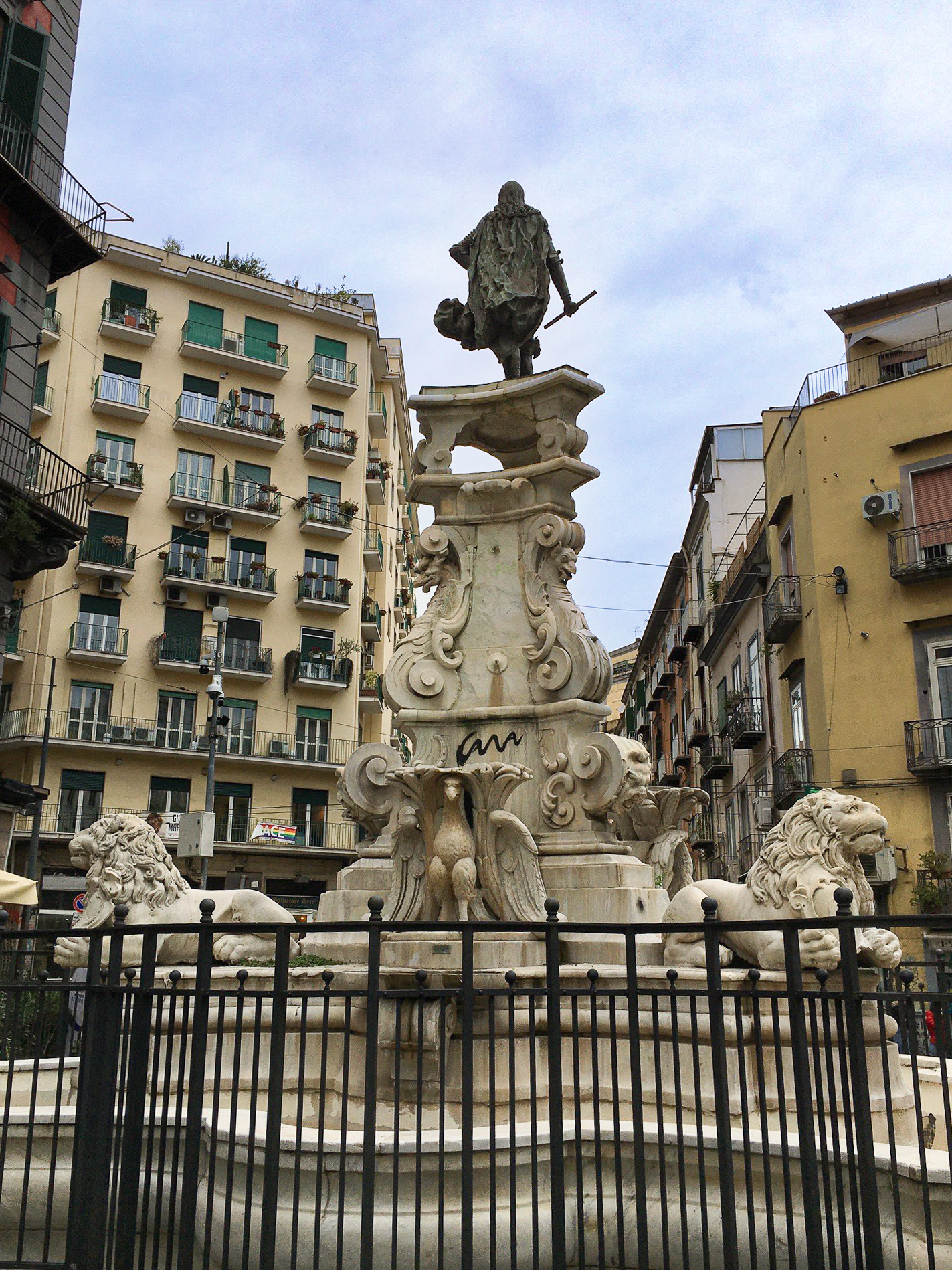Fountains, in addition to their practical use for water supply, have always performed a typically ornamental and scenographic function.
Therefore, we have numerous of them in all cities and in Naples there are different ones in terms of era and style. The Baroque, for obvious reasons, made great use of these artistic artefacts, which represent a happy mix between architecture and sculpture. It is no coincidence that all the main sculptors working in Naples in the seventeenth and eighteenth centuries tried their hand at creating or decorating at least one fountain.
 One of the most important fountains of seventeenth-century Naples is undoubtedly the Monteoliveto Fountain. According to tradition, it was the viceroy Don Pietro Antonio of Aragon who wanted the construction of this fountain to curry favor with the new sovereign, Charles II, who was only four years old when he ascended the throne. The works began in 1669 and were entrusted to the marble workers Bartolomeo Mori and Pietro Sanbarberio, under the direction of Donato Antonio Cafaro, a pupil of the great Cosimo Fanzago.
One of the most important fountains of seventeenth-century Naples is undoubtedly the Monteoliveto Fountain. According to tradition, it was the viceroy Don Pietro Antonio of Aragon who wanted the construction of this fountain to curry favor with the new sovereign, Charles II, who was only four years old when he ascended the throne. The works began in 1669 and were entrusted to the marble workers Bartolomeo Mori and Pietro Sanbarberio, under the direction of Donato Antonio Cafaro, a pupil of the great Cosimo Fanzago.
However, Mori passed away during the construction and the works came to a halt. In 1671 Dionisio Lazzari and Giovanni Mozzetti took over. During the design phase, then, the construction of the statue which was supposed to represent the king on horseback was entrusted to Giovanni Maiorino and Giovanni D'Auria. However, by the time the works were scheduled to expire, around 1673, they had not yet completed the work and so the commission passed into the hands of Francesco D'Angelo, who, together with the statue of the sovereign, also had to create a lion with a ball in his legs. Cosimo Fanzago also played an important role in the erection of the statue of Charles II, who took care of the design and supervision of the work, therefore working in close contact with the aforementioned Francesco D'Angelo.
Soon, controversies also arose with D'Angelo, who was initially asked to depict the king at the age of twelve, i.e. the actual age of 1673. At a later time, however, the clients changed their minds and wanted the portrayed was represented at eighteen years of age. The problem was overcome with greater compensation to the artist.
The tormented history of this fountain, then, is also characterized by a dispute that is certainly not secondary. In the Monteoliveto area, in fact, water supply problems have been reported for some time. Thus, the inhabitants of the area began to fear seeing their water supply reduced and it became necessary to quell citizens' protests. To overcome this age-old problem, a conduit had to be built to connect the Monteoliveto Fountain to the Medina Fountain. The works, both those of a logistical and historical-artistic nature, ended only in 1676.
The Monteoliveto Fountain has a large polylobed basin with three arms, on which stands a pedestal of the same shape with three lions holding the royal, viceregal and city coats of arms between their front paws. The three lions alternate with three beautiful eagles, placed inside small shell-shaped tubs. In the center you can appreciate a base in the shape of a pyramidal obelisk, which harks back to Fanzaghi's ideas that circulated in the city during the second half of the seventeenth century. The obelisk, decorated with masks and volutes, ends with a triangular base on which rests the statue of King Charles II, created, as has been said, by Francesco D'Angelo based on a design by Fanzago.



Comments powered by CComment